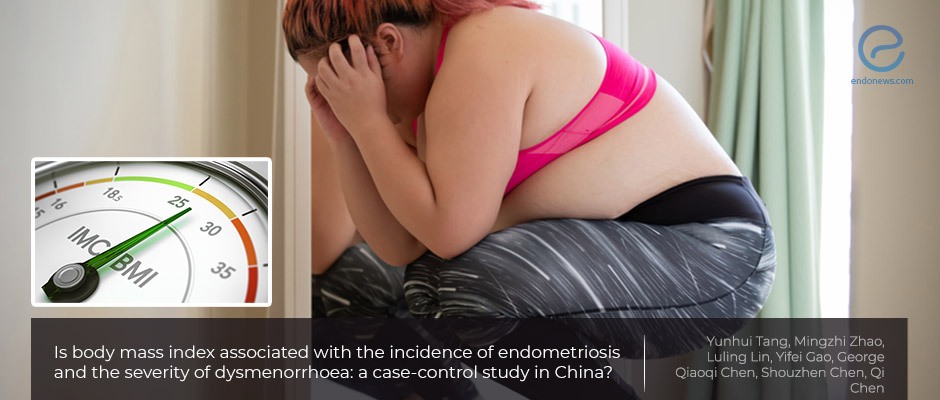Body mass index, the incidence of endometriosis and the severity of dysmenorrhoea
Oct 9, 2020
Obesity is a risk factor for severe menstrual pain
Key Points
Highlights:
- Obesity is associated with the severity of dysmenorrhoea.
What's done here:
- The association of body mass index (BMI), endometriosis, and dysmenorrhea were analyzed.
- Surgically diagnosed and histopathologically confirmed endometriosis (n=709), and age-matched controls (n=807) are compared.
Key Results:
- The risk of endometriosis is found to be doubled, in obese patients (BMI >27.5kg/m2 is obese by WHO for Asians/ Chinese women).
- Half of the patients reported dysmenorrhea.
- When dysmenorrhea and BMI were compared, the overall risk of having severe dysmenorrhoea in obese patients was 3.6 times higher, compared to normal, underweight, or overweight.
Limitations:
- The study is retrospective.
- There may be bias for controls (lack of confirmation of their disease).
- The medical comorbidities in the cohort were not addressed.
- The sample size for subanalysis by BMI categories is small.
Lay Summary
According to a case-control study conducted by researchers from China, there is no association between body mass index (BMI) and the incidence of endometriosis. This finding contrasts with the conventional knowledge that low BMI is a risk factor for endometriosis.
In earlier literature, a low body mass index is thought to be a risk factor, and some recent studies indicated that women with normal BMI also likely to develop endometriosis, implying that the issue is still controversial.
The research team led by Tang Y. retrospectively analyzed 709 women who were diagnosed with endometriosis by surgery/histopathology, and compared to 807 age-matched controls. Age at diagnosis, parity, gravida, BMI, and self-reported dysmenorrhoea status was recorded.
When the authors used the WHO classification of BMI for Asians/ Chinese women, which accepts BMI >27.5kg/m2 is obese, they found that the overall risk of having endometriosis is doubled, compared with patients with normal weight.
Furthermore, when researchers analyzed the association of BMI with the severity of dysmenorrhoea, the overall risk of having severe dysmenorrhoea in obese patients is 3.6 times higher, compared to patients of normal weight, underweight or overweight.
The authors found that the incidence of endometriosis increases significantly in obese Chinese women. Despite no association between BMI and the severity of dysmenorrhoea was seen, obesity was found to be associated with the severity of dysmenorrhoea.
This study has recently been published in the journal named BMJ Open.
Research Source: https://pubmed.ncbi.nlm.nih.gov/32895278/
body mass index obesity dysmenorrhoea endometriosis menstrual pain

